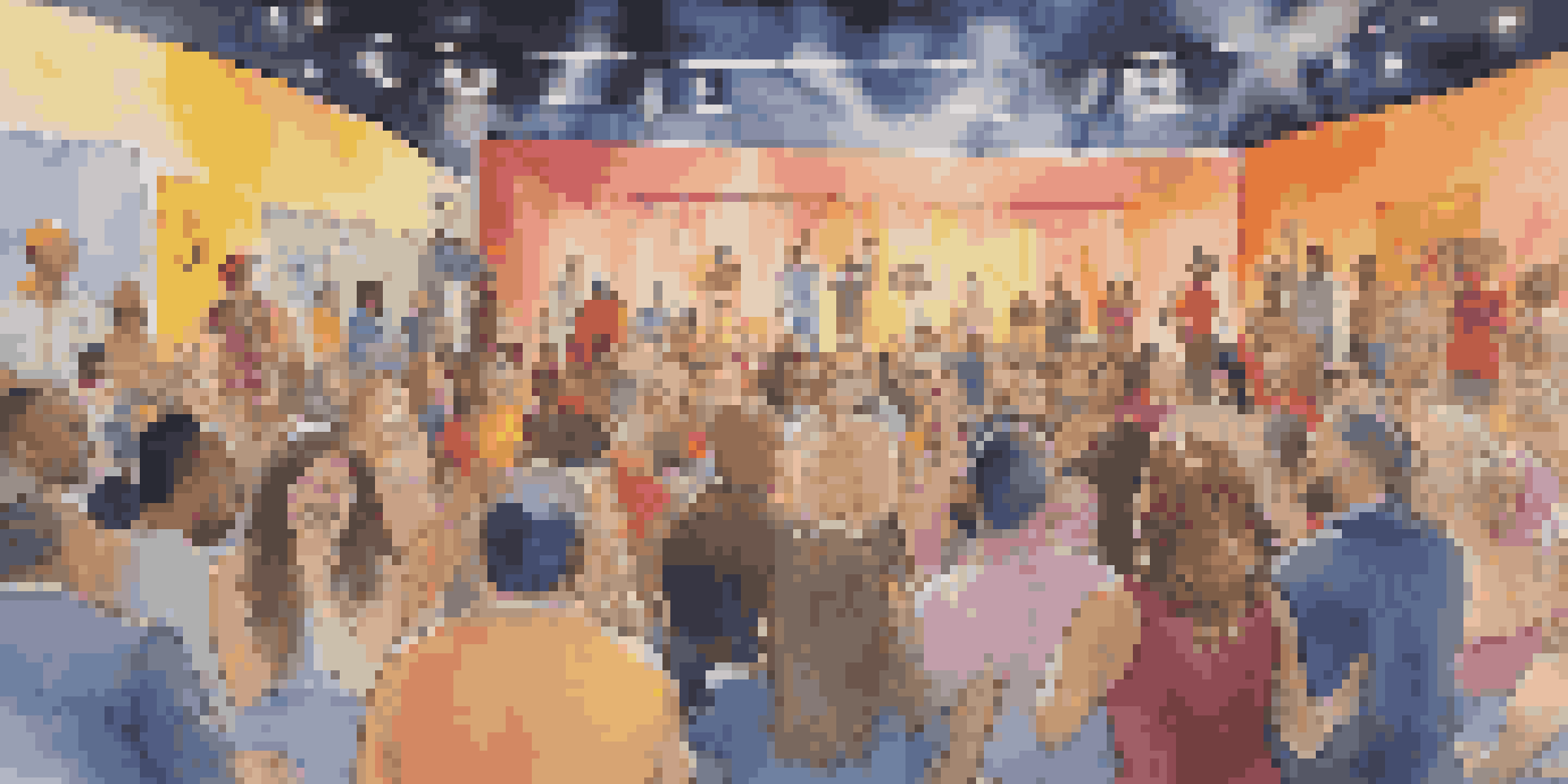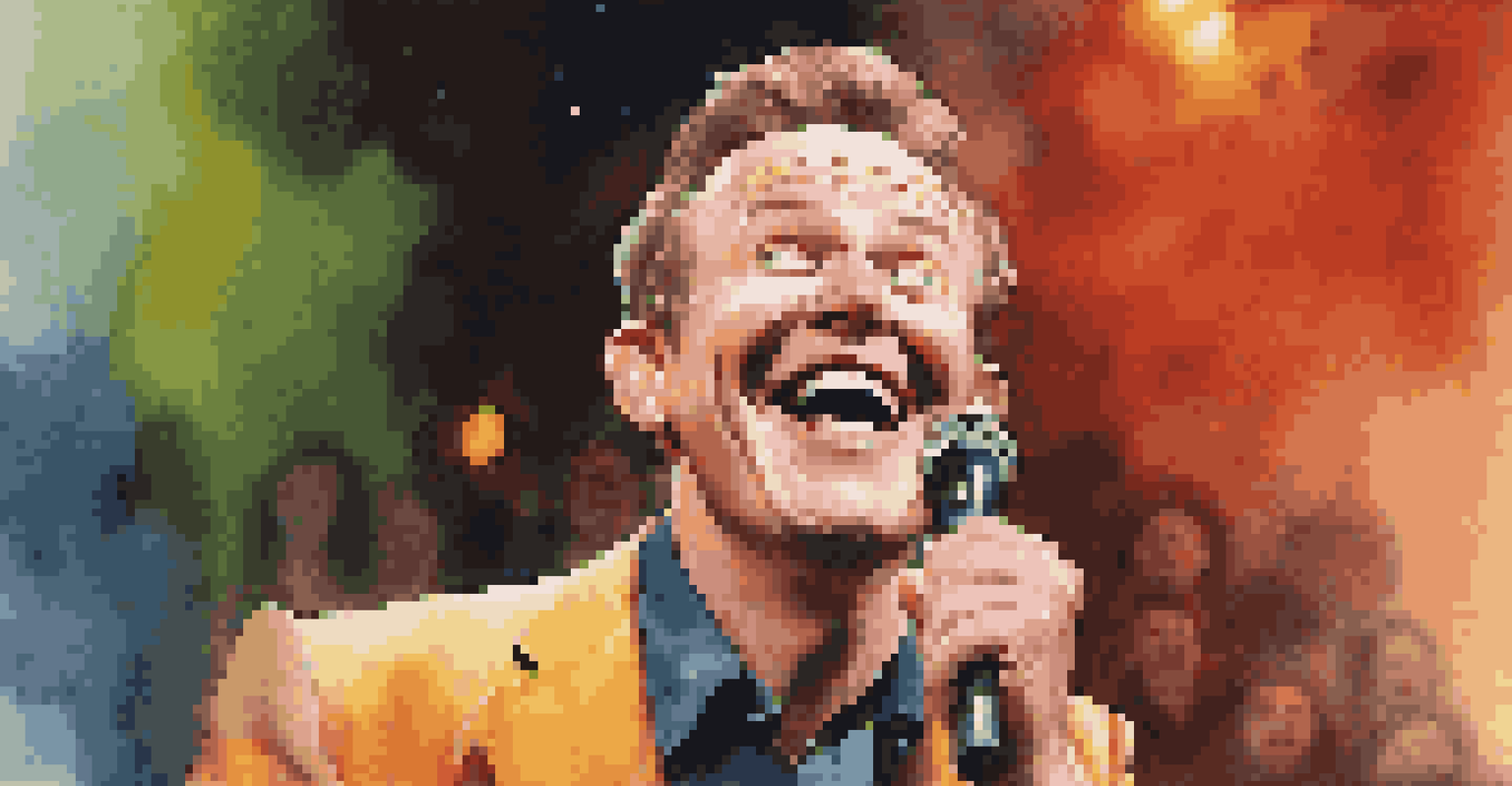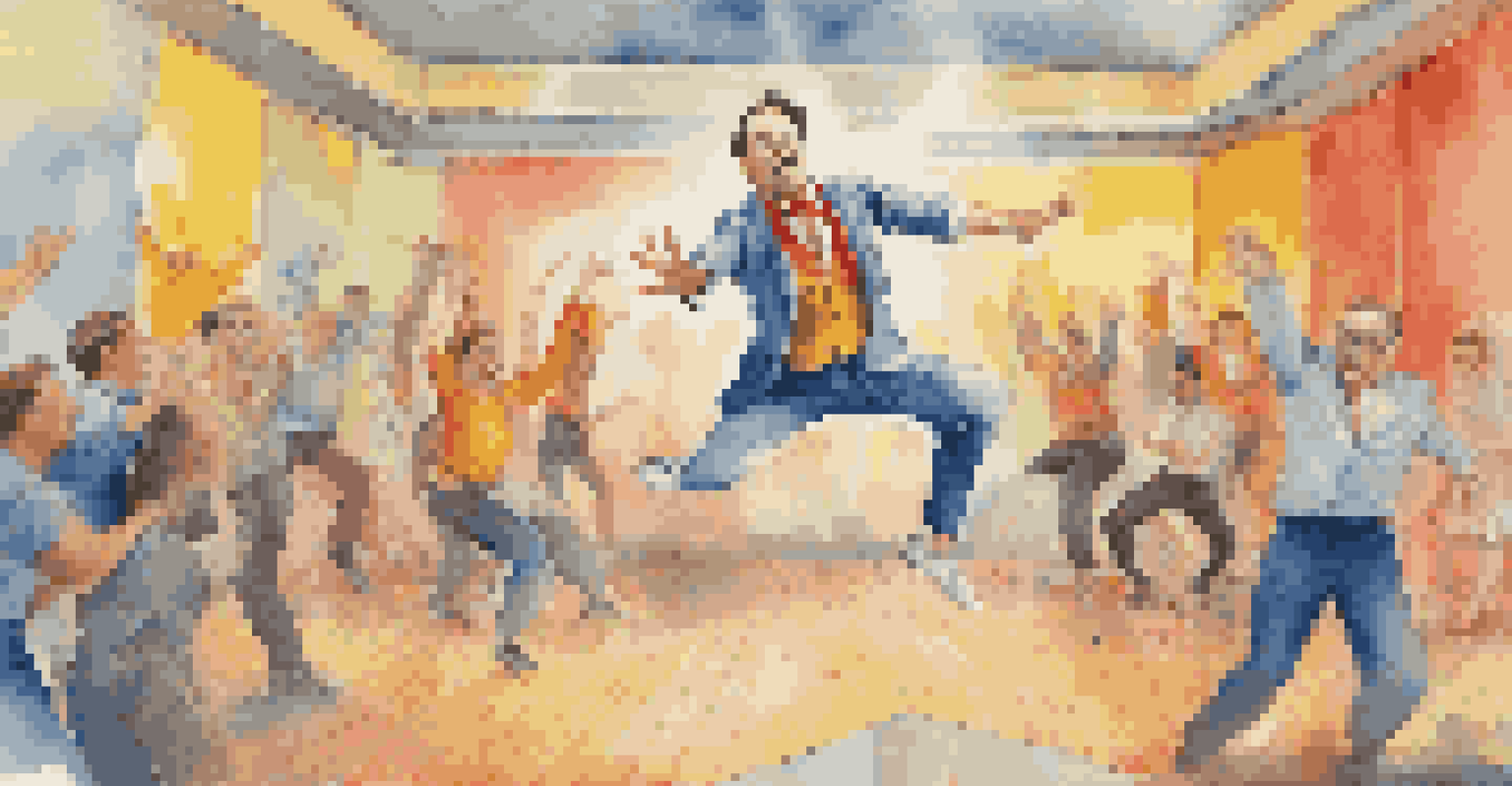The Use of Humor in Performance Art: A Unique Approach

Understanding Performance Art and Its Impact
Performance art is a dynamic form of expression, often blending various artistic mediums. It engages audiences on a personal level, allowing for emotional connections that traditional art forms might not achieve. By incorporating elements like humor, artists can create memorable experiences that resonate deeply with viewers.
Humor is just another defense against the universe.
This art form often challenges societal norms and provokes thought, but humor adds another layer to the experience. It can disarm an audience, making them more receptive to the artist's message. In this way, humor serves not just as entertainment but as a vehicle for deeper understanding.
Ultimately, performance art thrives on interaction, and humor can bridge the gap between the performer and the audience. It fosters a sense of community, inviting laughter and shared experiences. This connection is essential for the overall impact of the performance.
The Power of Humor: Breaking Down Barriers
Humor acts as a powerful tool in performance art, breaking down walls between the performer and the audience. When humor is woven into a performance, it creates an atmosphere of openness and ease. This can allow the audience to engage more freely, reducing tension and encouraging participation.

For instance, a comedian who incorporates storytelling into their act can use humor to navigate sensitive topics. This not only entertains but also prompts audiences to reflect on complex issues in a light-hearted manner. When done effectively, this approach transforms potential discomfort into shared laughter.
Humor Enhances Emotional Connection
Performance art uses humor to create personal connections, making audiences more receptive to deeper messages.
Moreover, humor often fosters inclusivity, making performances accessible to a broader audience. People from different backgrounds can find common ground through laughter, enhancing the overall impact of the work. This inclusivity is vital for the growth and evolution of performance art.
Comedy as a Narrative Device in Performance Art
Incorporating comedy into performance art can serve as an effective narrative device. By using humor to structure a performance, artists can guide their audience through a story or theme with ease. This not only keeps viewers engaged but also highlights the nuances of the narrative.
Comedy is acting out optimism.
For example, an artist may tell a personal story filled with comedic moments that lead to a more serious conclusion. This juxtaposition can make the message more impactful, as the humor disarms the audience and allows them to absorb the heavier themes. It’s a clever way to balance light and serious tones.
Furthermore, comedy can enhance timing and pacing in performance art. Well-timed jokes can create suspense or surprise, inviting audiences to stay on their toes. This rhythm keeps the performance lively and ensures that the audience remains invested throughout.
Using Satire to Critique Society in Performance Art
Satire is a humorous approach to critiquing societal norms and behaviors, making it a powerful element in performance art. By exaggerating certain traits or situations, artists can highlight the absurdities of everyday life. This method not only entertains but also encourages critical thinking among audiences.
For instance, a performance might mock societal expectations around beauty or success. Through laughter, audiences can confront uncomfortable truths and reflect on their own beliefs. This duality of humor and critique creates a space for dialogue and discovery.
Satire Critiques Society Effectively
Through satire, performance artists highlight societal absurdities, encouraging audiences to reflect on uncomfortable truths.
Moreover, satire can provoke discussions around important social issues. When humor is employed in this way, it can attract a diverse audience, broadening the impact of the message. This makes satire an invaluable tool for performance artists seeking to inspire change.
The Role of Physical Comedy in Performance Art
Physical comedy is another vibrant avenue through which humor enhances performance art. This form of humor relies on exaggerated movements and expressions to elicit laughter, often transcending language barriers. As a result, it can reach a diverse audience, making the art form more inclusive.
Consider the classic antics of Charlie Chaplin or modern clowning techniques; these examples illustrate how physicality can tell a story. It's not merely about the punchline but the journey that leads to laughter. Artists often use their bodies to communicate emotions and ideas, creating an engaging experience.
Additionally, physical comedy can amplify the emotional stakes of a performance. A well-executed pratfall, for instance, can evoke sympathy and laughter simultaneously. This interplay keeps audiences invested and enhances the overall richness of the performance.
Audience Interaction: The Humor Connection
Audience interaction is a hallmark of performance art, and humor can significantly enhance this connection. When performers engage with their audience through humor, it creates a shared experience that fosters community. This interaction makes each performance unique and memorable.
For example, comedians often rely on improvisation to create spontaneous moments with their audience. This not only showcases the performer's wit but also invites audience members to participate actively. Such moments can lead to unexpected laughter and genuine connections.
Audience Interaction Boosts Impact
Engaging audiences through humor fosters a sense of community, making each performance unique and memorable.
Moreover, audience interaction can break down the traditional performer-audience barrier. When the audience feels included in the humor, they are more likely to invest emotionally in the performance. This sense of belonging can amplify the overall impact of the artistic experience.
The Future of Humor in Performance Art
As performance art continues to evolve, the role of humor is likely to expand and adapt. With the rise of digital platforms and social media, artists have new avenues to explore comedic expression. This shift allows for innovative forms of performance that can reach global audiences instantly.
For instance, online performances can leverage memes, satire, and physical comedy in ways that traditional settings might not. This flexibility opens doors for fresh, engaging content that resonates with diverse viewers. As a result, humor can become an even more integral part of an artist's toolkit.

Moreover, the blending of genres may lead to exciting new forms of performance art. Collaborations between comedians, dancers, and other artists can yield unique works that challenge conventional boundaries. As the landscape changes, humor will undoubtedly play a crucial role in shaping the future of performance art.